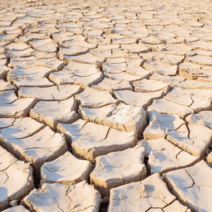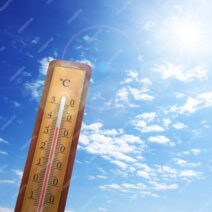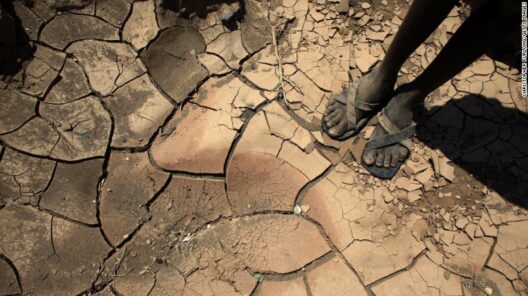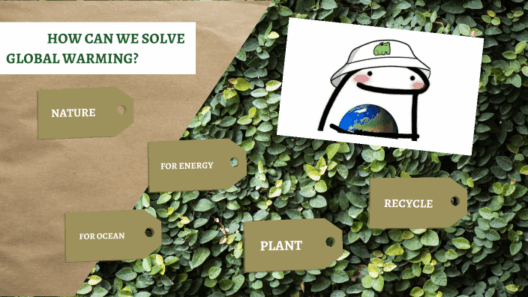The phenomenon of a warm winter has garnered much attention and spurred debates regarding its implications for climate change. As the planet continues to warm, the frequency and intensity of anomalous weather patterns—including unseasonably hot winters—are becoming more pronounced. The central question arises: Does a warm winter provide irrefutable evidence that climate change is real, or is it merely an anomaly within the vast variability of weather? This inquiry not only touches on meteorological science, but also on our understanding of long-term climate trends and their interpretations.
To embark on this exploration, it is vital to delineate between weather and climate. Weather refers to short-term atmospheric conditions in a specific place, while climate encompasses average weather patterns over extended periods, typically 30 years or more. Individual warm winter days can be dismissed as fleeting weather events. Yet, when these instances become pervasive across a season, they warrant scrutiny and an engaging dialogue about the multifaceted layers of climate change.
The crux of the matter lies in scientific evidence that illustrates how rising average temperatures are fundamentally altering climatic dynamics. The Intergovernmental Panel on Climate Change (IPCC) has reiterated that the last few decades have been characterized by a discernible upward trend in global temperatures, primarily driven by human activities. Consequently, a single warm winter does not encapsulate the broader climatic shifts, but it serves as a microcosm of a changing earth.
When examining specific examples of warm winters, one might consider the unprecedented winter of 2015-2016 in the eastern United States. A confluence of atmospheric conditions led to an uncharacteristically mild winter that not only thwarted traditional winter activities but also raised eyebrows regarding our climatic norms. Records of higher-than-average temperatures during this season prompted discussions among scientists and policymakers alike about the connection to climate change. Herein lies a pivotal realization: weather extremes are often emblematic of larger climatic trends, a consideration that challenges conventional perceptions.
Indeed, warm winters can serve as harbingers of significant climatic shifts. Increased occurrences of such events can lead to a cascading effect on ecosystems, agricultural productivity, and even human health. Warmer winters may disrupt the hibernation patterns of fauna, accelerate snowmelt, and influence the growing season of flora, thereby impacting agricultural outputs and food security. These intricate interdependencies beg the question: how prepared are we to confront the ramifications that arise from our warming winters?
Furthermore, the prevailing narratives surrounding climate change often grapple with combating misinformation. The idea that a warm winter contradicts the notion of a warming planet can be all too prevalent. This misapprehension emerges from a limited understanding of the vast complexities of climate systems and their manifestations. The challenge lies in reconciling the intuitive grasp of daily weather fluctuations with the scientific consensus on long-term climate patterns. A warm winter alone does not dismiss the realities of climate change; rather, it exemplifies the urgency for in-depth comprehension and dialogue.
Moreover, the psychological and sociopolitical dimensions of climate change cannot be underestimated. Warm winters may lull the public into a false sense of security, leading to complacency regarding climate action. When temperatures rise, short-term consumer behavior may skew toward reduced energy consumption, yet the long-term ecological consequences of climate change remain profound and far-reaching. Therefore, fostering awareness and encouraging a paradigmatic shift in thinking about climate variability is imperative. Active engagement with the scientific community can refine our understanding of the intersections between weather and climate.
It is also instructive to consider the responses from local governments and communities facing the brunt of these climatic changes. When winter temperatures exceed the long-term averages, municipalities are forced to reassess their planning and infrastructure. For instance, the occurrence of ice storms may become less common, requiring alterations to snow removal services and emergency preparedness plans. This realpolitik approach to climate adaptation underscores the interplay between climate science and societal response.
Moreover, as global systems become increasingly interlinked, understanding warm winters transcends geographical boundaries. The effects of climate change are experienced unevenly across the globe, with disparate outcomes in urban and rural areas, developing and developed countries. Anomalous winter temperatures in one region may affect migratory patterns of species and shift agricultural yields in another. Thus, the implications of a warm winter resonate throughout the global tapestry of ecosystems and communities.
Finally, to reconcile the complexity of warm winters with the overarching narrative of climate change, we must become adept at looking beyond the surface. It requires collective vigilance and curiosity, with an emphasis on continual learning. Every warm winter is a puzzle piece, contributing to a larger picture of a planet in transition. Engaging with multidisciplinary perspectives—ranging from environmental science to social equity—can enrich our understanding of the challenges that climate change presents and foster innovative solutions that prioritize sustainability.
In conclusion, while a warm winter in isolation may not serve as definitive proof of climate change, its occurrence within the broader context of climatic trends conveys a powerful message. It compels us to examine not only the observable changes in our environment but also the underlying forces driving these transformations. To adapt and thrive in the face of such challenges requires us to embrace inquiry, advocate for informed dialogue, and recalibrate our perspective on what climate change entails. Each warm winter is not just a passing moment; it embodies a clarion call for action and responsibility toward our planet.






